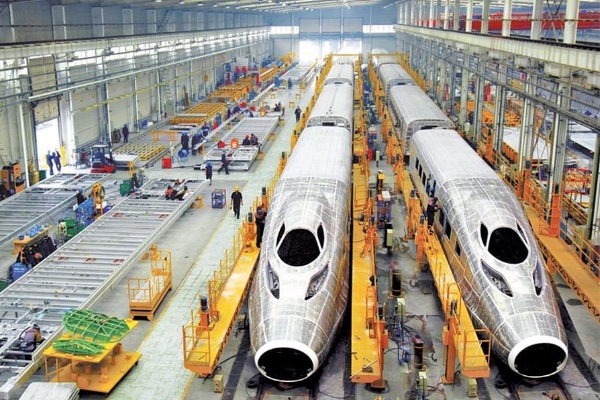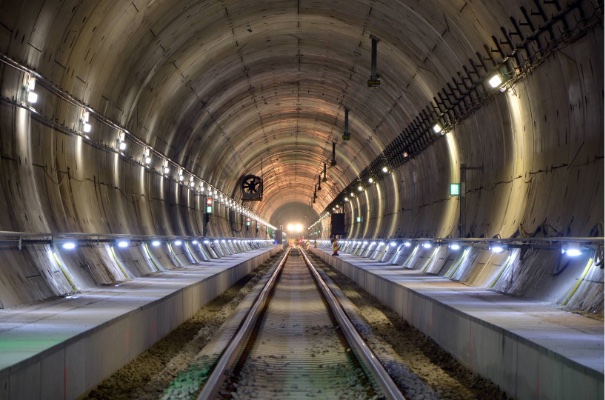ANTONIO LÓPEZ | Tungsteno
The infrastructure of the current railway system seems not to have changed much in 200 years, but it will have to do so to adapt to the world to come. This is especially true given the expected growth of large cities and the challenge of decarbonisation, a sine qua non for economic progress. In this context, projects such as the UK's HS2 network or the European Union's Ultra-Rapid-Train system rely on high-speed trains as a lever for economic recovery while helping to reduce the carbon footprint.
The creation of a green high-speed rail network with four main lines (Dublin-Paris, Lisbon-Helsinki, Brussels-Valletta and Berlin-Nicosia) in Europe could halve the number of short- and medium-haul flights, according to an analysis by the Vienna Institute for International Economic Studies, which estimates a reduction in CO2 emissions from aviation of between four and five percentage points. The European Union has recently raised its commitment to reducing emissions from 40% to 55% by 2030 and will spend 1.8 trillion euros on financing the industrial transformation needed to achieve carbon neutrality, a roadmap in which transport plays a key role.

Given present trends, passenger and freight activity will more than double by 2050, making the train the main green alternative to other means of transport. Credit: China Railway Corporation.
The electric train: an ally for urban planning and the environment
The International Energy Agency (IEA) estimates that three quarters of passenger rail transport activity takes place on electric trains. The train is also one of the most efficient means of transport, as while it carries 8% of the world's passengers (and 7% of global freight), it accounts for only 2% of the total energy demand in its sector. In fact, based on current trends, this passenger and freight activity will more than double by 2050.
High-speed rail is also the most highly electrified means of transport, enabling greater energy diversification, a quality that makes it the ideal candidate to facilitate the social cohesion that will be necessary in the future urban environments of our planet. In the world in which we will live in the coming decades, cities will see exponential growth, especially in emerging countries, where the rise in incomes will generate a larger middle class, which will influence the demand for transportation, according to the IEA. In addition, the forecasts from the consultancy firm Arup estimate that by 2050 more than 20% of the population will be over 60 years old, as opposed to 11% today, an ageing that will also have an impact on the design and choice of transport solutions.

High-speed rail must solve challenges such as pressure changes in tunnels or air resistance, for example, to become the most effective option. Credit: Trafikverket.
Technical challenges and opportunities for high-speed rail
The first challenge facing high-speed (over 250 km per hour) rail to establish itself as such is air resistance, which increases exponentially in relation to velocity. In addition, changes in tunnel pressure mean that vehicles must be pressurised, which in turn generates a pressure difference that the structure must withstand, which over time causes wear and tear, according to an analysis by the International Union of Railways. Noise is another of the negative effects that accompany the increase in speed, and even liquefaction, the deterioration of the ground that supports the rail tracks, is a problem in some geographical areas.
Some of the most promising technological solutions to facilitate the expansion of high-speed rail lines involve overhauling some basic mechanisms, such as those that allow for track changes while minimising the risk of error and reducing the execution time, or introducing smart suspension systems that incorporate sensors so that trains won’t need to slow down when travelling along a curved track. Another key element in the optimisation of the movement of these high-speed vehicles is that several trains can operate on the same track simultaneously, thanks to a virtual coupling system that would make it possible to know what the train in front is doing and where it will be if it brakes, which requires a high degree of coordination and real-time communication of data on each train.
As for the future of transport, which will force us to stay grounded in terms of energy consumption and the reduction of emissions if we want to continue to inhabit our planet, there are also non-terrestrial alternatives. In fact, NASA is currently developing a new generation of airships to replace trucks, trains and ships in the future for the transport of terrestrial goods, which could even facilitate the transport of passengers in low-Earth orbit or on potential trips to explore the clouds of Venus.
· — —
Tungsteno is a journalism laboratory to scan the essence of innovation. Devised by Materia Publicaciones Científicas for Sacyr’s blog.
